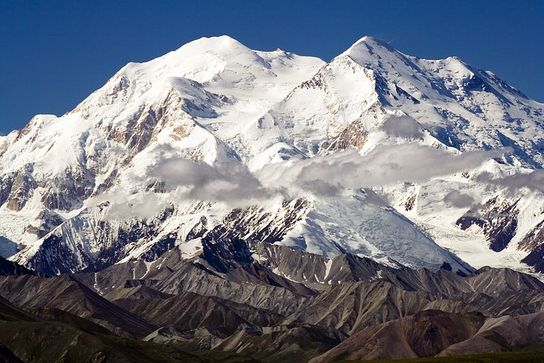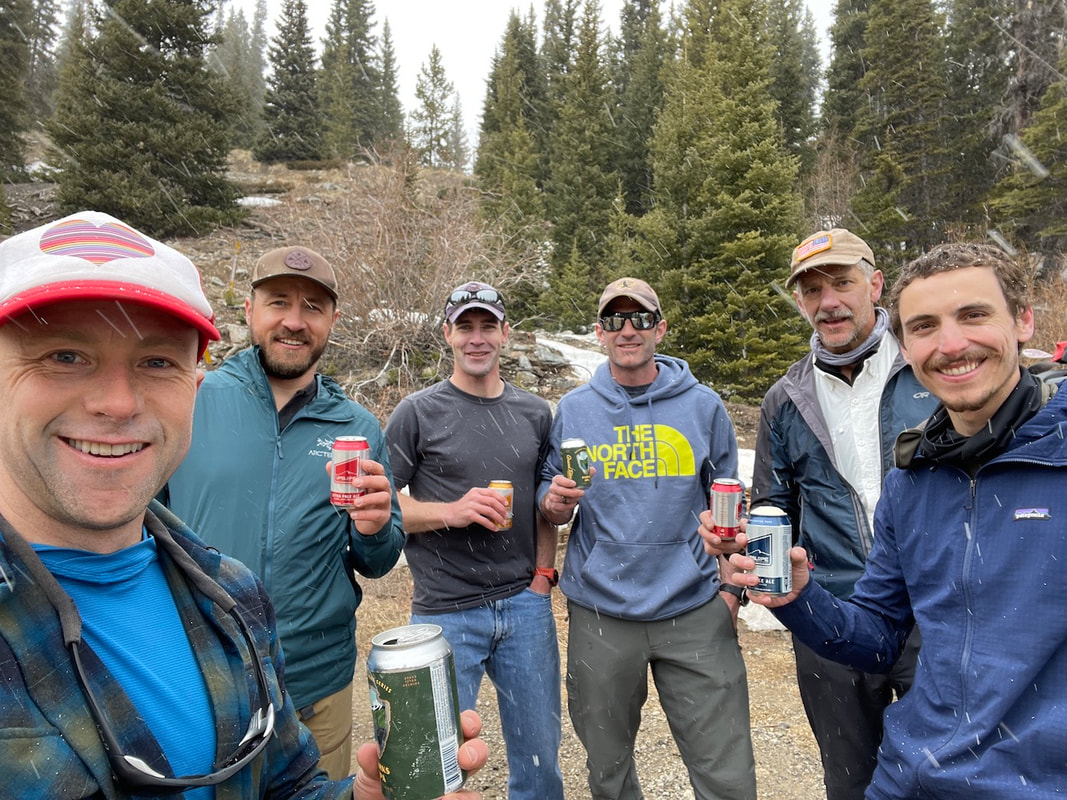ALASKA: Denali (20,237ft)
Ranked #1/50
Highpoint detailsDenali (Koyukon Athabaskan for "The High One", Dghelaayce’e in Ahtna) is the highest mountain peak in North America, with a summit elevation of 20,237 feet (6,168 m) above sea level. At some 18,000 feet (5,500 m), the base to peak rise is considered the largest of any mountain situated entirely above sea level.[5] Measured by topographic prominence, it is the third most prominent peak after Mount Everest and Aconcagua. Located in the Alaska Range in the interior of US state of Alaska, it is the centerpiece of Denali National Park and Preserve.
The first European to document sighting the mountain was George Vancouver in 1794. In 1903, James Wickersham recorded the first attempt at climbing McKinley, which was unsuccessful. In 1906, Frederick Cook claimed the first ascent, which was later proven to be false. The first verifiable ascent to McKinley's summit was achieved on June 7, 1913 by climbers Hudson Stuck, Harry Karstens, Walter Harper, and Robert Tatum, who went by the South Summit. In 1951, Bradford Washburn pioneered the West Buttress route, considered to be the safest and easiest route and therefore the most popular currently in use.[6] On September 11, 2013, Alaska's lieutenant governor Mead Treadwell announced Mount McKinley is 20,237 feet (6,168 m) tall and not 20,320 feet (6,194 m) as measured in 1952 usingphotogrammetry. The Statewide Digital Mapping Initiative, in cooperation with the U.S. Geological Survey, said the more accurate height was 83 feet (25 m) lower using measurements from a 2012 survey that used Interferometric Synthetic Aperture Radar.[7] The new height was accepted by the U.S. Geological Survey and is now part of its National Elevation Dataset.[8] Famed explorer Dr. Frederick Cook claimed the first ascent of the mountain in 1906. His claim was regarded with some suspicion from the start, but was also widely believed. It was later proved false, with some crucial evidence provided by Bradford Washburn when he was sketched on a lower peak. In 1910, four locals (Tom Lloyd, Peter Anderson, Billy Taylor, and Charles McGonagall), known as the Sourdough Expedition, attempted McKinley despite a complete lack of climbing experience. They spent approximately three months on the mountain. However, their purported summit day was impressive: carrying a bag of doughnuts each, a thermos of hot chocolate, and a 14-foot (4.2 m) spruce pole, two of them reached the North Summit, the lower of the two, and erected the pole near the top. According to them, they took a total of 18 hours. No one believed their success (partly due to false claims that they had climbed both summits) until the true first ascent, in 1913. In 1912, the Parker-Browne expedition nearly reached the summit, turning back within just a few hundred yards of it due to harsh weather. In fact, that probably saved their lives, as a powerful earthquake shattered the glacier they had ascended hours after they safely left it. The first ascent of the main summit of McKinley came on June 7, 1913 by a party led by Hudson Stuck and Harry Karstens. The first man to reach the summit was Walter Harper, an Alaska Native. Robert Tatum also made the summit. Tatum later commented, "The view from the top of Mount McKinley is like looking out the windows of Heaven!"[27] They ascended the Muldrow Glacier route pioneered by the earlier expeditions, which is still often climbed today. Stuck confirmed, via binoculars, the presence of a large pole near the North Summit; this report confirmed the Sourdough ascent, and today it is widely believed that the Sourdoughs did succeed on the North Summit. However, the pole was never seen before or since, so there is still some doubt. Stuck also discovered that the Parker-Browne party were only about 200 feet (61 m) of elevation short of the true summit when they turned back. See the timeline below for more important events in Mount McKinley's climbing history. The mountain is regularly climbed today; in 2003, around 58% of climbers reached the top. But by 2003, the mountain had claimed the lives of nearly 100 mountaineers over time.[28] The vast majority of climbers use the West Buttress Route, pioneered in 1951 by Bradford Washburn,[6] after an extensive aerial photographic analysis of the mountain. Climbers typically take two to four weeks to ascend the mountain. On May 31, 2013, Ed Warren of the United States Air Force set a new speed-climbing record on Denali's West Buttress route, breaking the previous record-claim from 2003 (which was disputed),[29]by more than 7 hours.[30] |
trip detailsAir Force Team Climbing Denali May-June 2021!
Dates: May 28th - June 15 (approx) Who: Led by Lt Col Rob Marshall and Lt Col Mark Uberuaga; includes Maj Marshall Klitzke; Capt Wes Morgan; SrA Mark Schaffeld Route: Ascend to 14,000ft using skis and splitboards. Then summit via Upper West Rib and return to 14k via the ski/board on the Messner Couloir (conditions permitting) Why: Not just for the joy of climbing, but to also support the conversation and research surrounding resiliency. It's not something to simply talk about, but we want to support Airmen and their families in getting outside, taking on challenges, and proactively preparing for setbacks/difficulties in life! Visit the USAF 50 Summits Facebook Page for updates from the team on Denali
|



